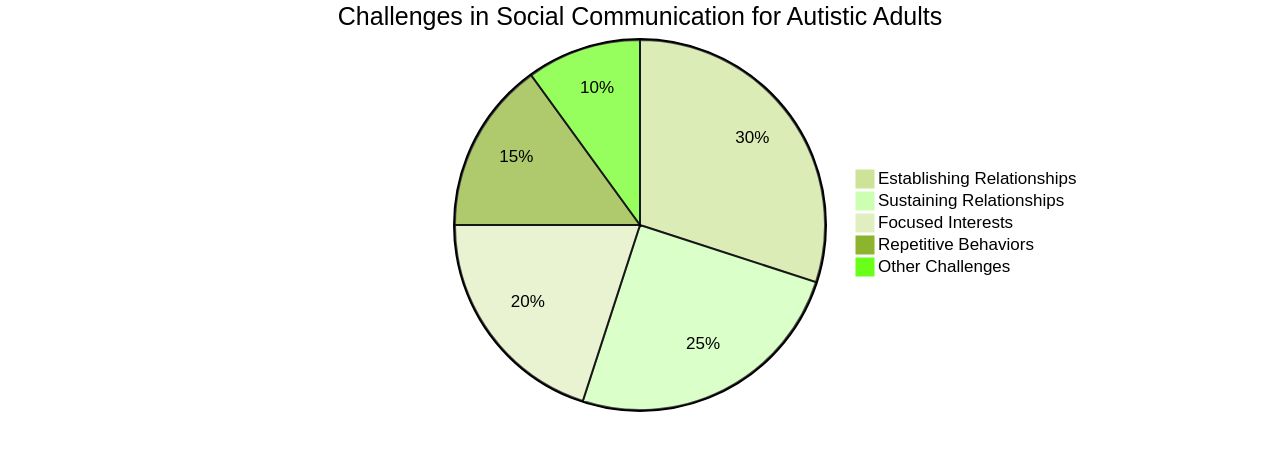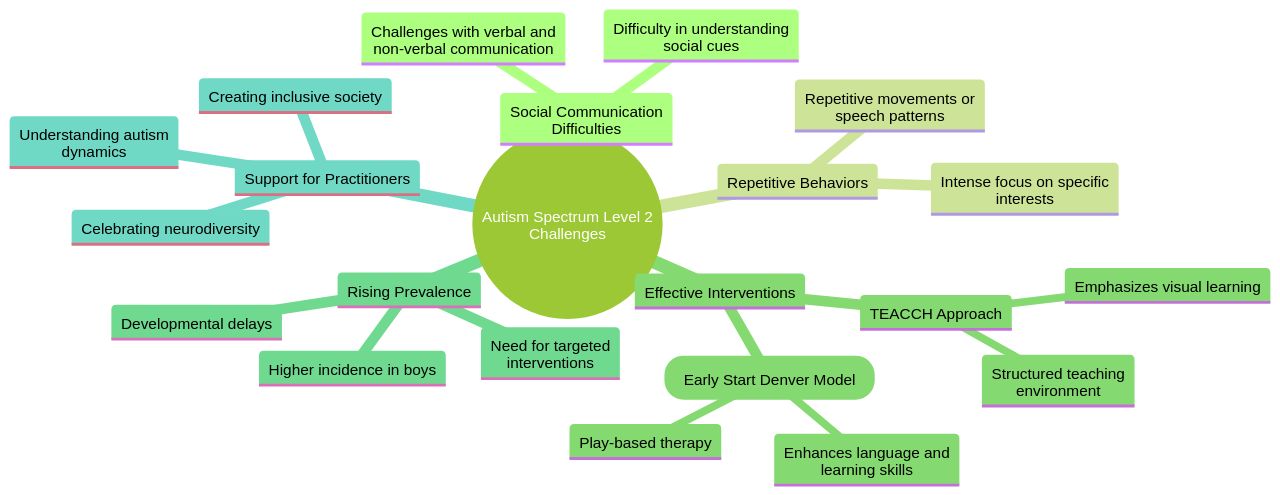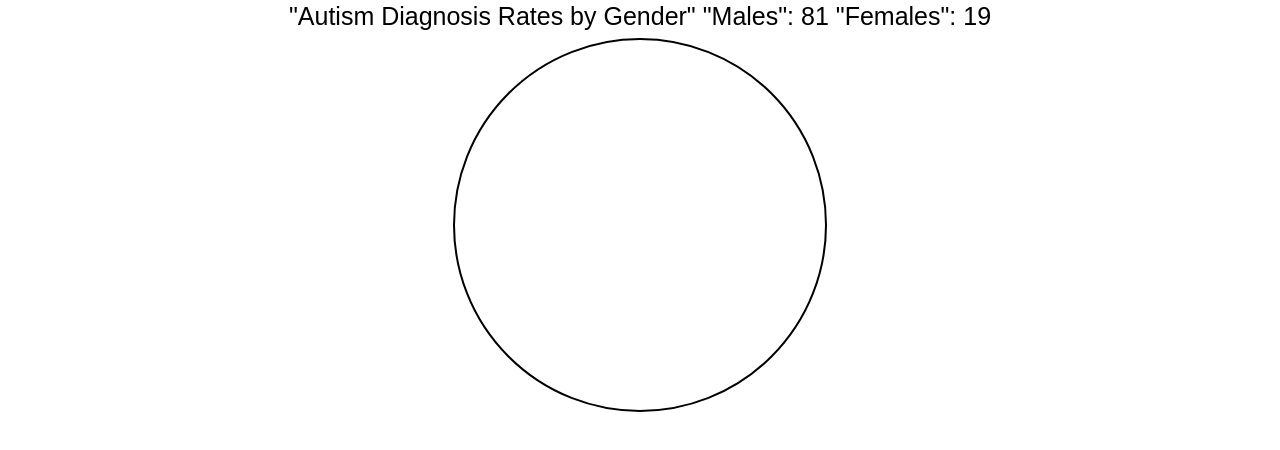Introduction
Understanding the Spectrum: Levels of Autism
Autism Spectrum Disorder (ASD) is a complex neurodevelopmental condition that manifests in a broad array of behaviors and challenges. Each individual with autism is unique, with their own strengths and difficulties.
The spectrum is divided into levels that reflect the degree of support needed, from requiring support to requiring very substantial support. In this article, we will explore each level of the autism spectrum, the challenges faced by individuals at each level, and the tailored interventions and support that can enhance their well-being. By gaining a better understanding of the spectrum, we can ensure that individuals with autism receive the necessary support to lead fulfilling lives.
Understanding the Spectrum: Levels of Autism
Autism Spectrum Disorder (ASD) is a complex neurodevelopmental condition that manifests in a broad array of behaviors and challenges. This condition is characterized by its 'spectrum' nature, indicating that no two individuals with autism are alike; each has unique strengths and difficulties. From social interactions to communication styles, the spectrum is vast and divided into levels reflecting the degree of support needed.
The DSM-5, a critical diagnostic tool used by clinicians, outlines the core features of autism, which must be present from early childhood, although they may not become apparent until later when social demands outstrip coping capacities. Misconceptions about autism's origins have been debunked, affirming it is not caused by vaccines, parenting, or nutrition, but rather suggests a genetic predisposition. While the exact genetic markers remain elusive, research is ongoing to identify possible genetic contributors.
Meanwhile, environmental factors, such as exposure to insecticides and certain childhood infections, have also been implicated in the development of ASD. Recent studies, including a cohort study of 1.3 million children in Ontario, indicate that children born to individuals with infertility issues may have a higher likelihood of autism, through fertility treatments themselves are not a contributing factor. With the prevalence of autism in the United States rising to one in 36 children, understanding the condition, its diagnosis, and the support required is paramount.
The American Psychiatric Association emphasizes the need for a multidisciplinary approach to diagnosis, involving experts from various fields. As we learn more about autism, particularly in adults, we recognize the importance of supporting individuals across their lifespan, including during major life transitions that can exacerbate symptoms. With a strong emphasis on early detection and tailored support, we can ensure that individuals with ASD can lead fulfilling lives.
Level 1: Requiring Support
Level 1 on the autism spectrum, also referred to as requiring support, encapsulates individuals who face particular challenges in social communication and interaction. These challenges may manifest as difficulty in establishing and sustaining relationships, alongside a tendency for repetitive behaviors and focused interests. The journey into adulthood for these individuals can be marked with societal and psychological hurdles, as they strive for independence and fulfillment.
The recent CDC study unveiling that approximately 5.4 million adults in the U.S. have autism spectrum disorder (ASD) underscores the urgency for tailored support and interventions. As adults, autistic individuals may encounter unique transition points similar to their neurotypical peers, yet with distinct issues. For example, navigating the workforce or personal relationships can be more taxing due to sensory sensitivities or executive functioning challenges.
The concept of autistic burnout, characterized by profound fatigue and reduced functionality, often arises in the face of these life changes. This underscores the necessity of understanding the specific therapeutic needs of autistic individuals, which, for conditions such as anxiety and depression, align closely with the needs of the general population. Despite the commonality in therapeutic needs, autistic adults frequently report difficulties in accessing care, with practitioners turning them away or lacking adequate training.
However, with a modest investment in learning and adaptation, healthcare providers can offer competent care to autistic patients. In this light, the Adult Autism Health Resources initiative by Harvard Medical School emerges as a beacon of hope, aiming to educate and empower clinicians to cater to the unique needs of autistic adults. This initiative is vital as it addresses the gap in services that autistic individuals face post-high school, advocating for the same quality of medical care that is afforded to neurotypical individuals.

Level 2: Requiring Substantial Support
Navigating the journey with autism requires understanding the unique challenges and strengths of each individual. Those on Level 2 of the autism spectrum often face significant hurdles in social communication and exhibit rigid, repetitive behaviors.
Adapting to change and handling the unexpected can be overwhelming, but with robust support, their quality of life can vastly improve. Interventions tailored to their needs, such as the Treatment and Education of Autistic and Related Communication-Handicapped Children (TEACCH) approach, which leverages visual learning and consistency, can be transformative.
Similarly, the Early Start Denver Model (ESDM) harnesses the power of play and social interaction within a natural environment to enhance language and learning skills in children as young as 12 months. These educational treatments, when embedded in a classroom setting, can foster progress.
Notably, the prevalence of developmental delays, which includes autism, has risen, with boys being more affected than girls. This highlights the urgent need for targeted interventions and the importance of understanding autism's dynamics to aid those like the five-year-old boy with ASD and ARFID, whose care was complicated by social determinants of health. The support of practitioners willing to learn and include autistic individuals in their caseloads, recognizing their common strengths such as attention to detail and deep subject matter expertise, is crucial. This collective effort can mitigate the psychological and societal challenges autistic individuals face, particularly as they reach adulthood or when diagnosed in later life, and can lead to a more inclusive society that celebrates neurodiversity.

Level 3: Requiring Very Substantial Support
Individuals with Level 3 autism confront substantial hurdles in their daily lives, requiring intensive support to navigate social interactions, communication, and behavior. Many at this level face significant social engagement challenges, have restricted verbal abilities, or may not speak at all.
Tailored interventions and consistent daily support are crucial to enhance their autonomy and quality of life. By integrating developmental and family-centered approaches, such as the Treatment and Education of Autistic and Related Communication-Handicapped Children (TEACCH) method, caregivers can harness the benefits of structured, visual-based learning and consistent routines to foster better academic and developmental outcomes.
For instance, setting clear daily routines and learning boundaries can significantly improve engagement and learning experiences. Moreover, therapy sessions that emphasize play and social exchanges can bolster language and social skills.
However, the stark reality is that many families struggle to access or advocate for these necessary services. Language barriers and financial constraints often impede the ability of caregivers, like the mother working as a kitchen assistant and caring for her child with autism, to secure the specialized support their children need. It is imperative to recognize the unique strengths of individuals with autism, such as a heightened sense of justice and remarkable attention to detail, to provide care that is not only supportive but also empowering. As the prevalence of autism rises, with recent reports indicating 1 in every 36 children affected, the need for competent practitioners who can offer inclusive care is more pressing than ever. The disparity in diagnosis rates among different ethnic groups and genders underscores the urgency for culturally sensitive and equitable healthcare practices to ensure that all children, regardless of background, can thrive.

Conclusion
Understanding the levels of Autism Spectrum Disorder (ASD) is crucial for providing the necessary support to individuals with autism. Each level reflects the degree of support needed, from requiring support to requiring very substantial support.
At Level 1, individuals require support in social communication and interaction. Tailored interventions can help them achieve independence.
Level 2 individuals face significant hurdles in social communication and exhibit rigid behaviors. Targeted interventions like TEACCH and ESDM can make a transformative difference.
At Level 3, individuals require very substantial support in their daily lives. Tailored interventions emphasizing structured learning and consistent routines are crucial for their autonomy. As autism prevalence rises, practitioners must offer inclusive care to meet diverse needs. Culturally sensitive healthcare practices are essential for equitable access to care. By understanding the spectrum and providing tailored interventions, we empower individuals with autism to reach their full potential and create an inclusive society that celebrates neurodiversity.




